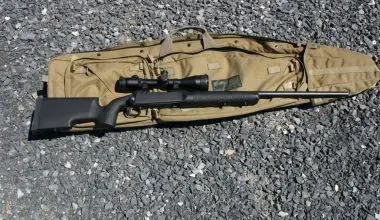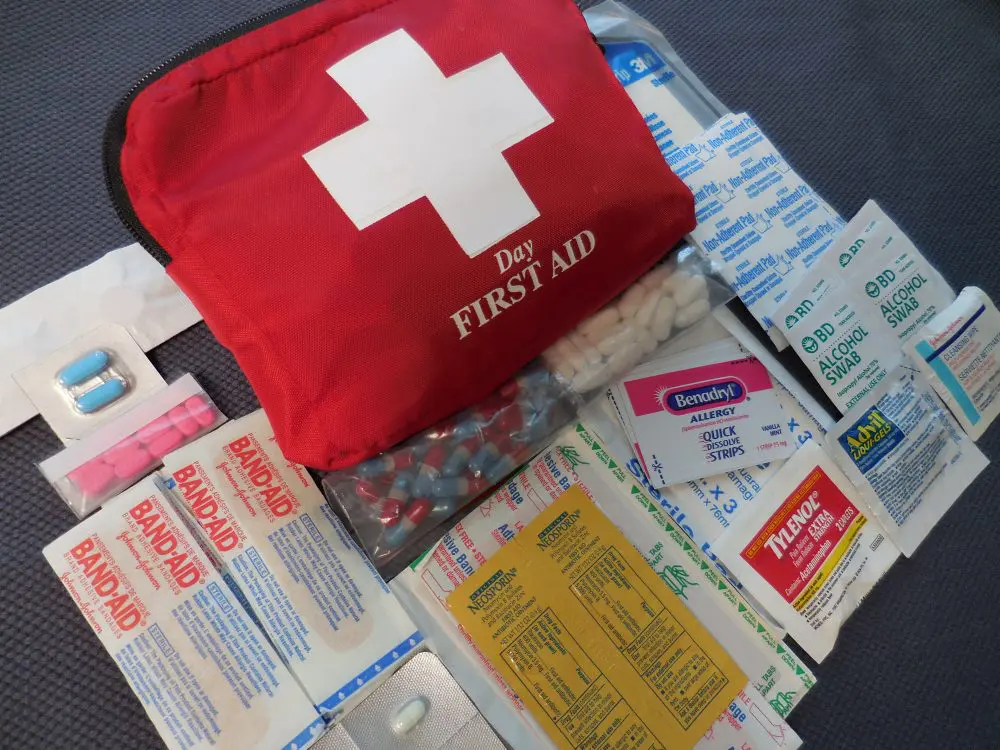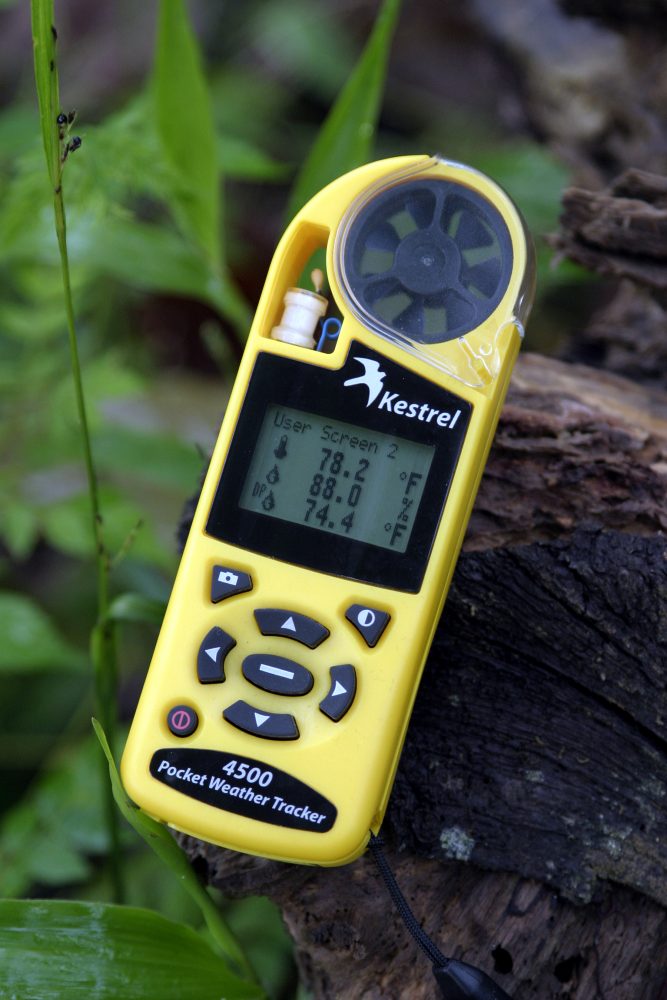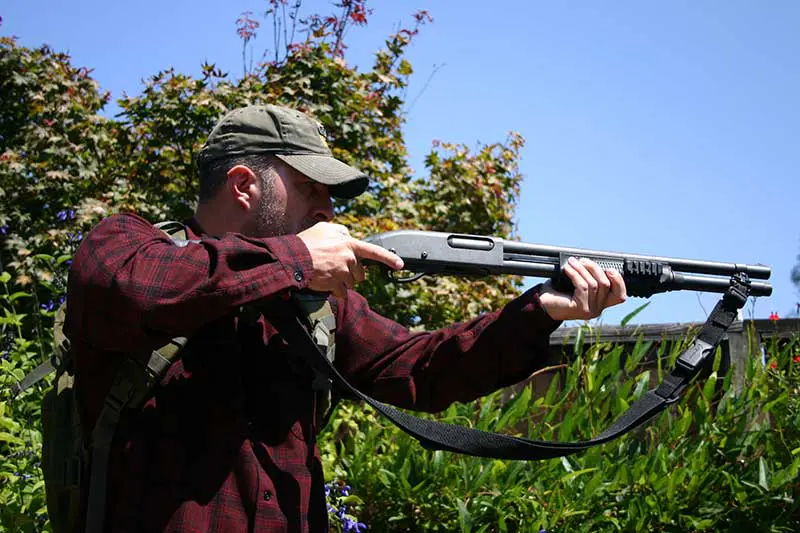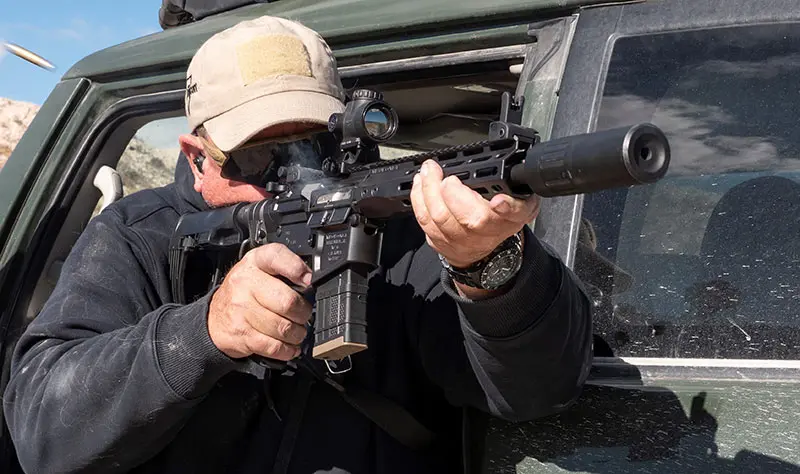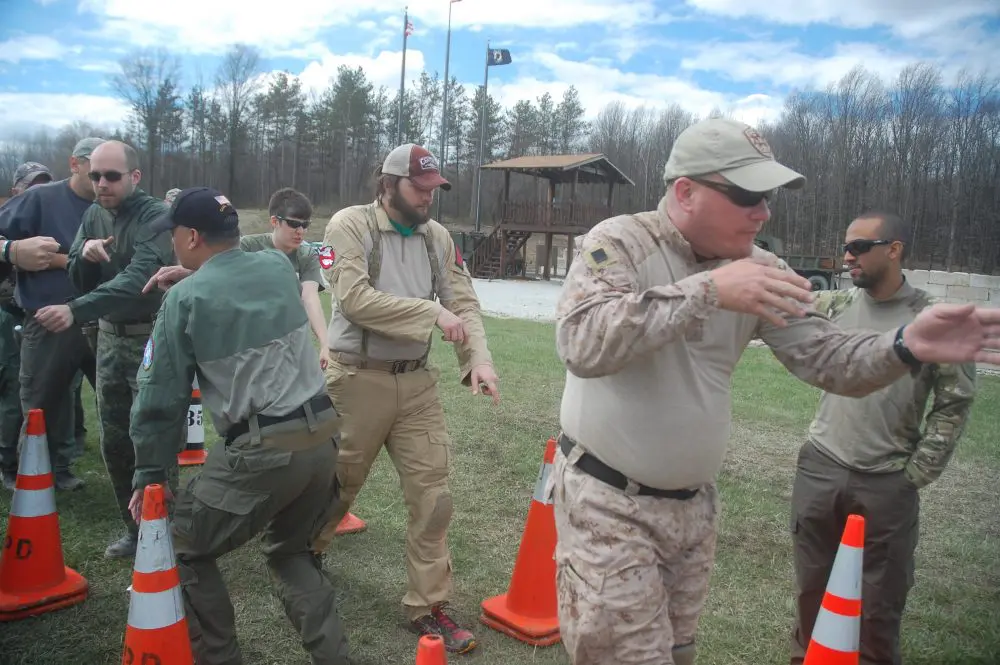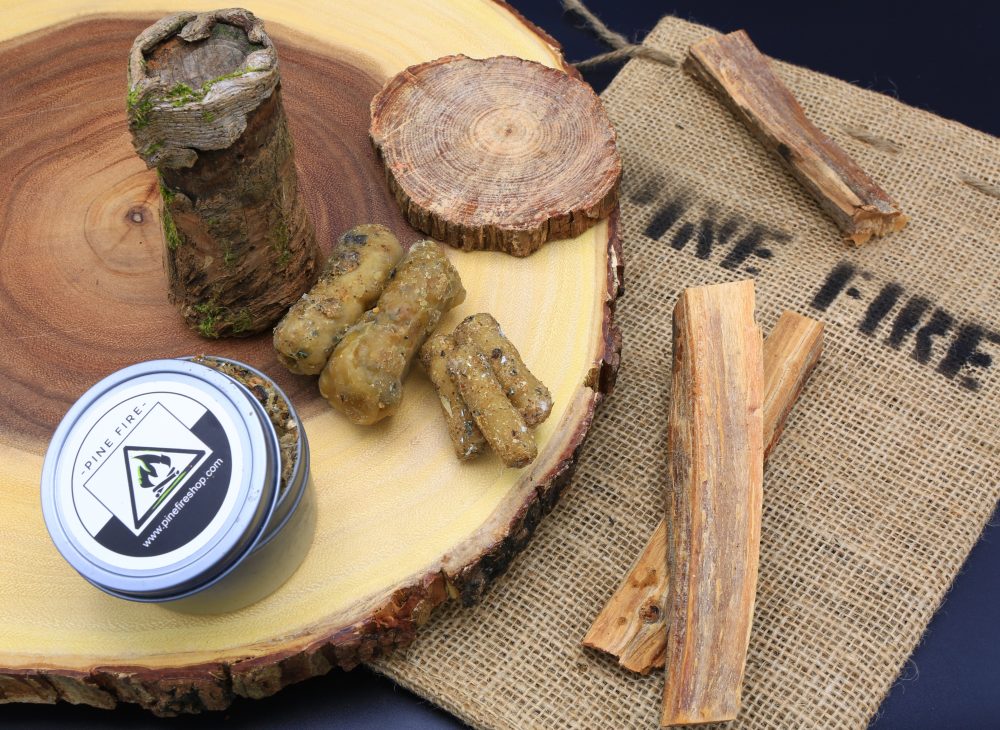
When they came back after a short hiatus in late 2016 as Pine Fire Shop, the business was more focused on fire starters with the addition of fatwood. After a few months, owner Michael Herdson felt strongly about becoming more of a “green company.”
Michael stopped using petroleum products and figured out how to reverse engineer pine sap. “We have some great vendors we use to get some of the raw materials to create sap, but everything is petroleum free and all-natural—something we’re proud of.”
Michael harvests everything himself and has multiple areas he uses so as not to disturb the natural process of the outdoors. He really is a staunch conservationist. He is very careful when harvesting materials like cedar or birch bark. When “fatwood hunting,” he only uses already felled trees in an effort to keep the flora and fauna in balance.
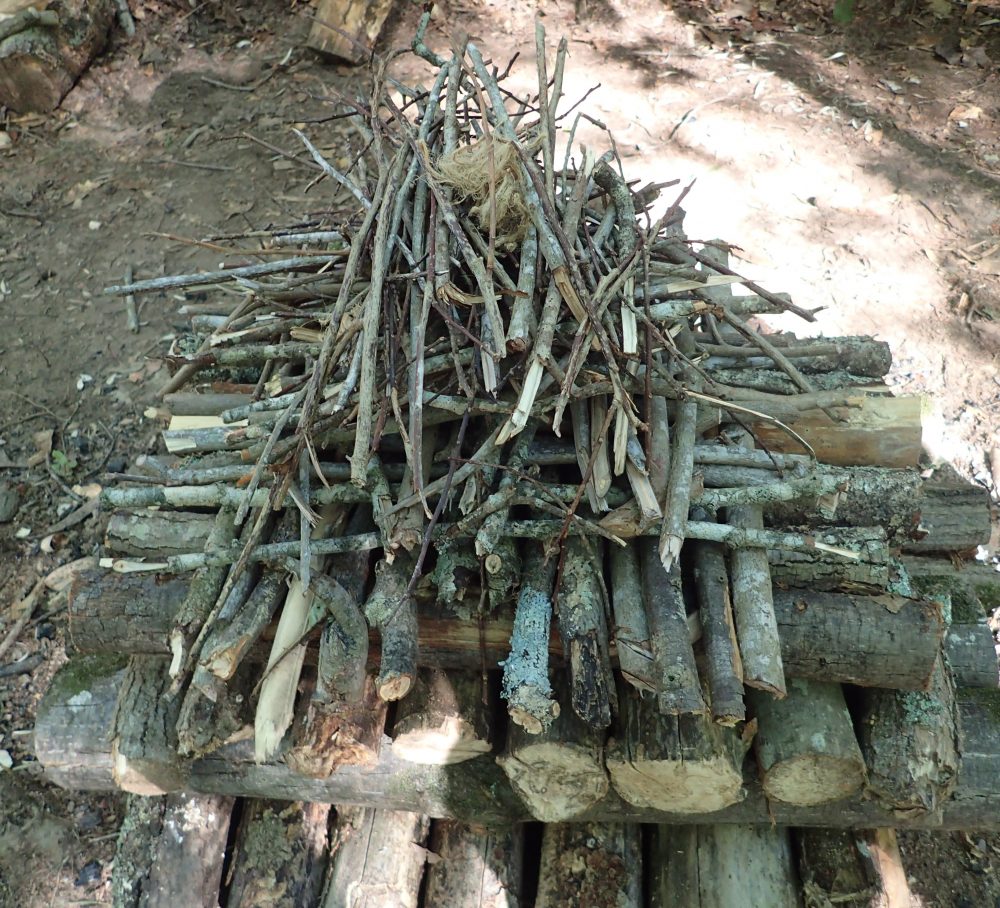
Table of Contents
THE PROCESS
From what I understand, the end products are the result of a lot of trial and error. “We value the struggle—it just makes things more interesting,” said Michael. What started out on a backyard grill using kettles has moved into an around-the-clock venture that isn’t affected by the weather outdoors. This allows them to make more consistent products.
Pine Fire Shop uses ingredients ranging from fatwood to 5mm jute twine, river birch, cotton (four different kinds), two forms of pure magnesium, hydrangea leaves, and occasionally cattails. Through sap and wax reduction processes, to getting fatwood dust, and putting it all together, Michael and his wife, Casey, do it all.
PINE FIRE STARTERS
I received a more than generous package from Michael, giving me enough materials to start a lifetime’s worth of fires. Among the products were:
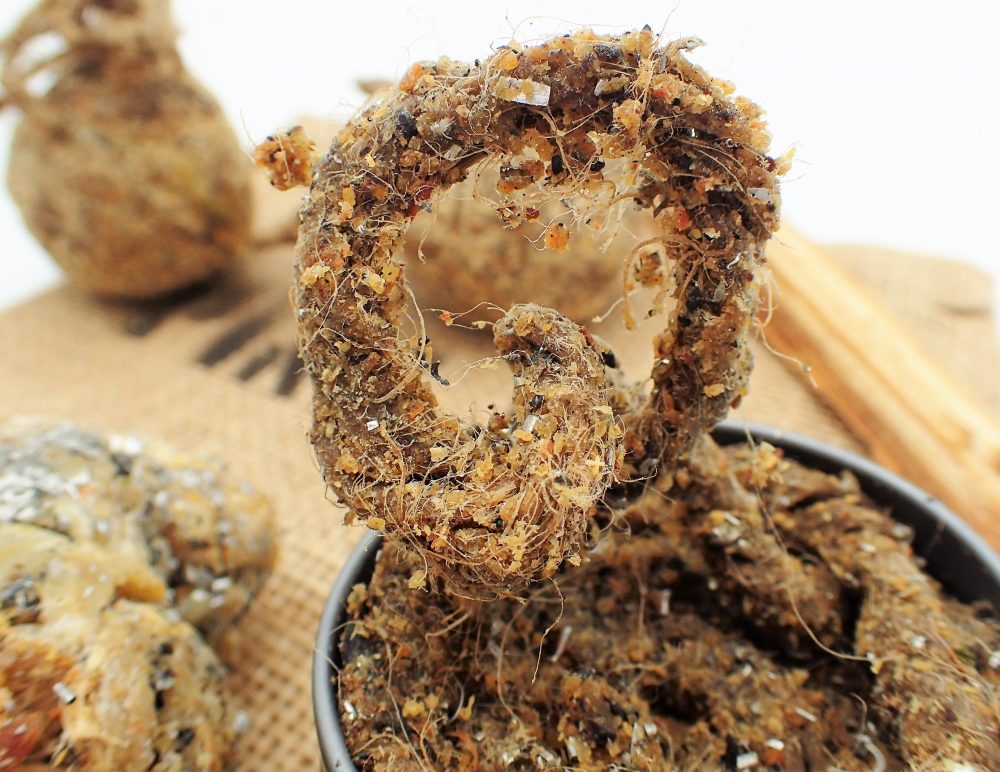
- Super Jute is essentially a five-foot jute spool in a circular tin. It is very simple to use: Unravel the amount you need, cut, fluff, and ignite with either a lighter or ferro rod. It’s lightweight and easy to carry.
- Super Fly consists of five waterproof starters that can just be cut open, fluffed, and ignited. Each lasts 10 to 15 minutes and can be used full or cut down, depending on conditions and need. They are meant for small wood/twig stoves or with decent tinder.
- Fire Flys are a smaller version of the Super Fly and lend themselves well to small wood stoves and Esbit-style stoves, using it as the main fire source to boil a cup of tea or coffee. They will soot up your metal pot or container.
- Knotty Time is a hefty pine knot to be carried or stashed at a regular camp. This is for people who want the feeling of sourcing their own tinder. Extremely durable and hardy, just baton it in half when you need it and use as you would fatwood, splitting off pieces to scrape a pile of fatwood (called Maya dust) or make fine shavings.
The variety of materials allows people of all levels to practice fire making in the most unfavorable conditions. For those who don’t live in a pine forest with pine knots, resin on trees, or fatwood stumps, using these products offers a chance to try them out.
OUTDOOR USE
I first encountered Pine Fire Shop products during a summertime rainy spell in Georgia. I was doing a bush trip with Randall’s Adventure & Training lead instructor Patrick Rollins. Fire starting was a challenge for some, mostly due to the humidity.
Patrick is the authority on anything related to fire, so if he has it, it’s worth checking out. We used a version of Super Fly, an impregnated cotton-based product that’s full of pine-resin goodness.
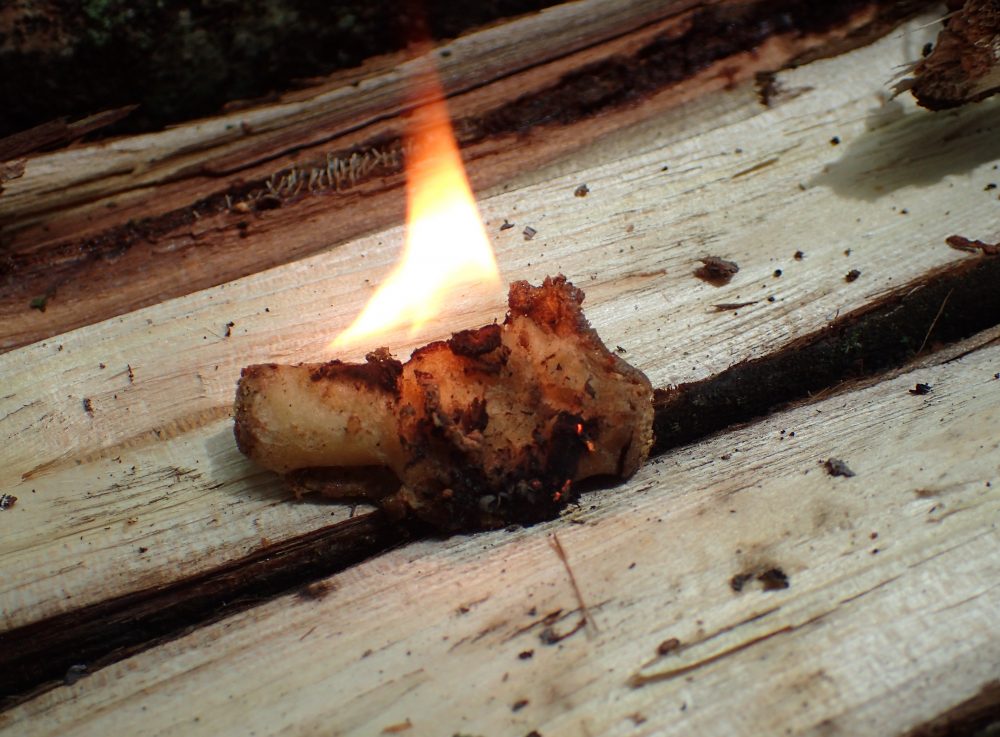
Without patience, all is lost when it comes to emergency fire making! When using Pine Fire Shop products, a simple handful of dry twigs, about pencil to finger thickness, can be used, with the small “nugget” lit underneath it.
The nugget’s burn time—between 10 and 15 minutes—is sufficient to ignite most semi-dry twigs. In a phone conversation I had with Michael, we agreed about proper fire-lighting preparations and how his products are not to negate them, but to make things easier, especially in times of peril.
Normally, tinder of very fine, fibrous materials is the first step. Then, and only then, are toothpick and pencil-thick twigs added. Finger and broomstick-thick pieces are next, to get a sustainable fire. Fuel would generally be wrist thickness and larger.
Using Pine Fire Shop products will let even a novice get a sustainable fire, fast. And their products are not limited to beginners. If a seasoned outdoorsman takes a dip in a river or gets caught in a torrential rain in the wilderness, the last thing he wants to worry about is getting warm and dry. Enter Pine Fire!
While building add-ons to a semi-permanent camp in Georgia, Patrick and I made an upside-down fire (also known as a pyramid fire) that would serve as our work fire to keep mosquitos at bay and allow a good cook/boil fire during our activities.
We used some Pine Fire Super Jute twine, fluffed it out, and got it ready to strike a spark into. But first, we decided to soak it in rainwater. Then we wrung it out, frayed it, and struck a spark from a ferrocerium rod, only to witness it catch and burst into flame atop our already prepared pyramid fire. The fire burned on without a hitch, for about four hours of useable fire and coals.
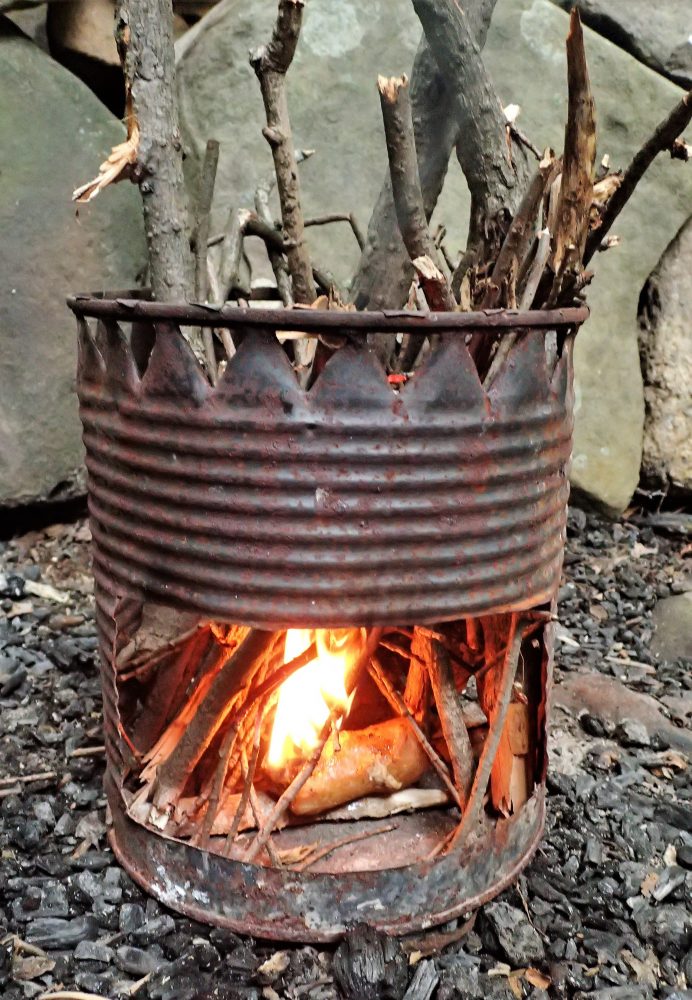
I usually stuff the Hobo-stove with small, thin sticks and work up to pencil-thick pieces. Lastly, I place dry tinder at the bottom, along with some fuzz sticks to gradually ignite it all. But with the Fire Fly pieces, I skipped the natural tinder and fuzz sticks altogether. When the Fire Fly was lit, that was all she wrote.
Pine Fire Shop products are a must for everyone from the novice to the professional outdoorsman. Give Michael and Pine Fire Shop a look and make fire starting a snap!
SOURCE:
PINE FIRE SHOP
www.pinefireshop.com

